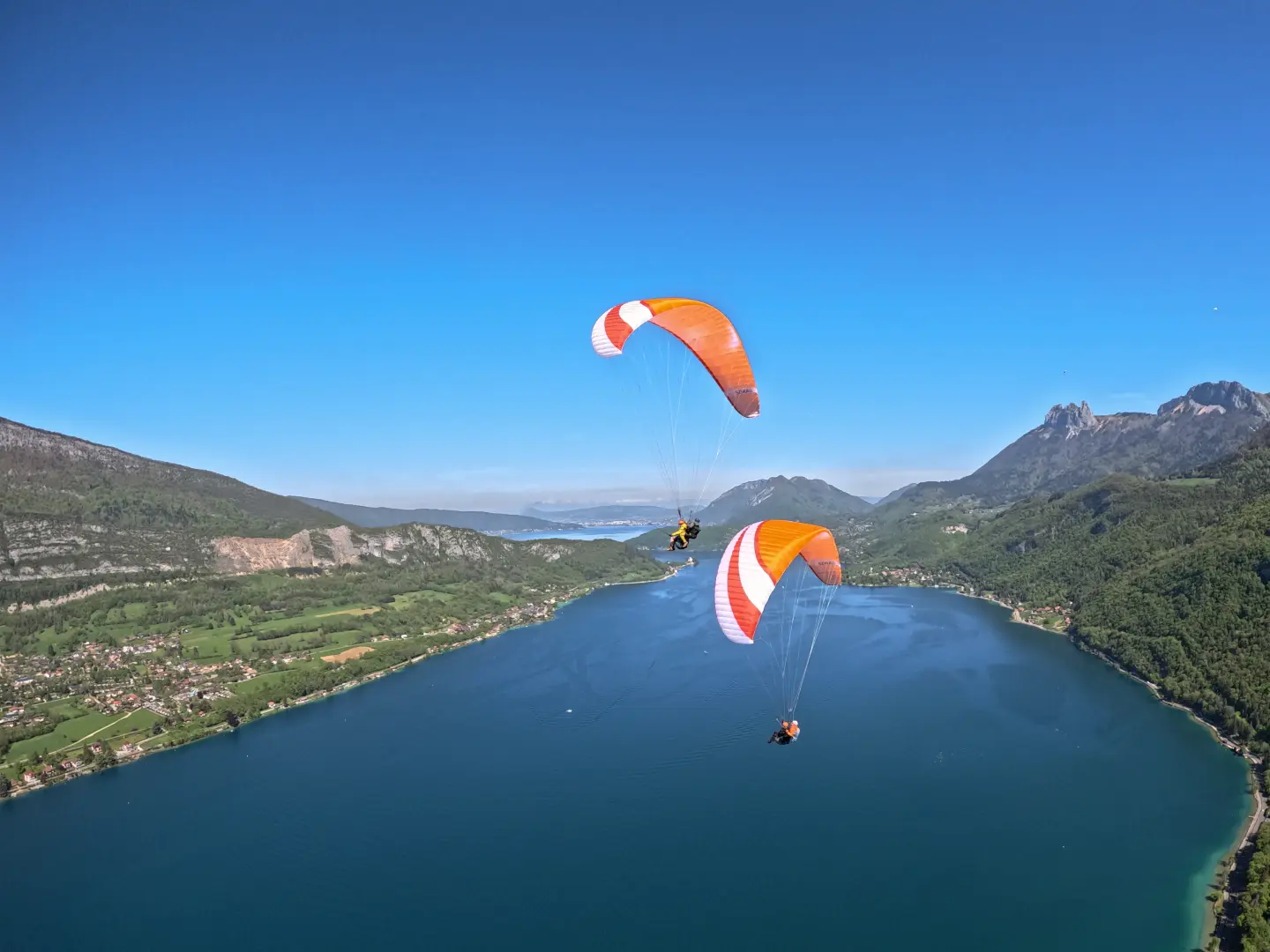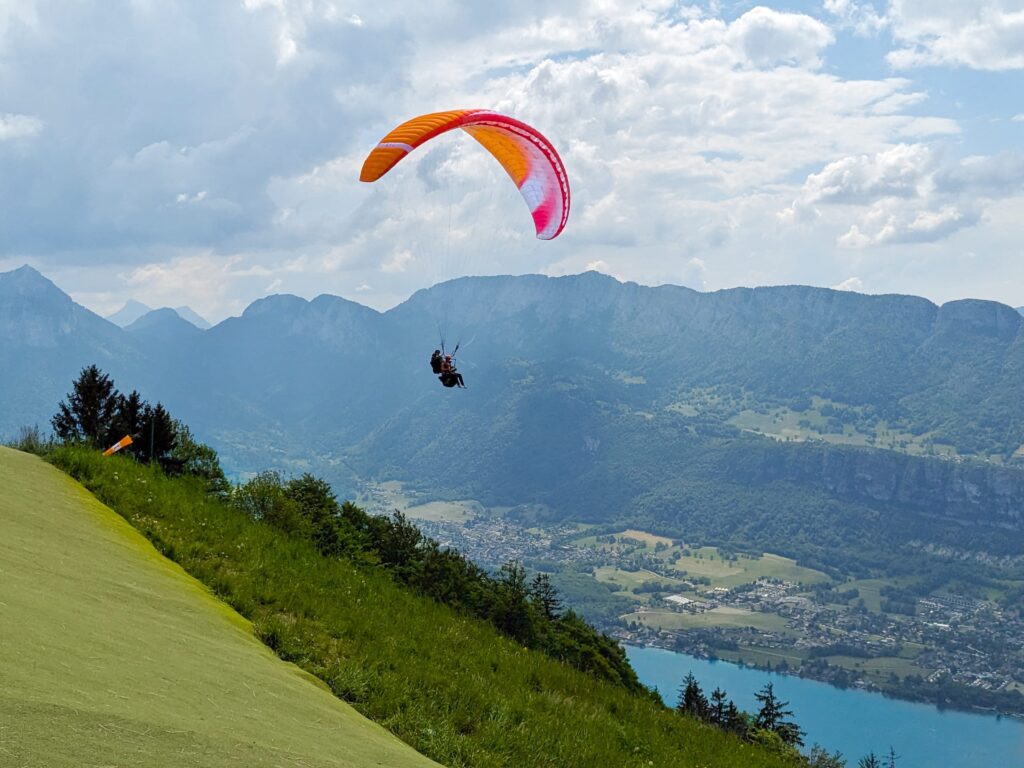
Is paragliding safe?
Before trying a new activity, it is wise to consider its level of danger. Below, we provide answers to the question: is tandem paragliding safe?
Tandem paragliding with a professional pilot is highly safe, comparable to hiking or running, and 15 times safer than driving. Solo paragliding under instruction is also safe, but leisure solo paragliding and tandem paragliding where the pilot is not a professional presents more risk, although there are ways to mitigate it.
To provide a comprehensive answer, it is important to first define what “safe” means in the context of paragliding. We can then examine the safety of tandem paragliding, including statistics comparing it to other activities:
- Defining “safe” for a sport like paragliding
- How dangerous is tandem paragliding?
What does “safe” mean in the context of a sport like paragliding?
The Cambridge dictionary defines Safe as “not in danger or likely to be harmed”.
This remains pretty vague, so let’s break it down based on the different flying phases of paragliding:
- During take off, while feet are still on the ground, pilots and passengers may be required to take some brisk steps akin to light running. The wing might pull them back and in rare occurrences, drags them backwards if the wind suddenly picks up. Possible injuries during these phases may be similar to running injuries such as ankle strains or running falls. Paragliding passengers and pilots are wear helmets, therefore highly reducing the risk of serious head injuries.
- It is a similar story during the landing phase of paragliding. As soon as the feet touch the ground, the same injuries can occur with the same associated risks.
Therefore, to define “safe” in the context of paragliding, we can consider these two phases as being as dangerous as running might be.
The main phase of paragliding, the flying phase, requires flying at an altitude above the ground. This inherently carries a risk related to gravity and what would happen in the very unlikely event of an impact with the ground occurring from heights above the terrain below.
In paragliding, we are equipped with a reserve parachute, both during solo and tandem flights. This adds a strong additional safeguard towards fatal injuries due to falls from a height. Paradoxically, the higher above the ground, the safer we are, since it leaves plenty of time to attempt recovering from whatever incidents may have happened and, in last resort, use the reserve parachute as it is intended.
So “safe” becomes mostly a matter of preventing injuries associated to the running phase and the accidents that could occur in the unlikely events of an impact from high altitude with the ground.
Let’s now examine the safety of tandem paragliding.
How dangerous is tandem paragliding?
If you are the passenger and the pilot is a professional, it is incredibly safe. As we have seen above, the main risk is related to the “running risk” associated with the take-off and landing phases. For this reason, paragliding schools require passengers to wear closed-toe shoes suitable for running for a short period of time: no flip-flops on take-off!
Professional tandem paragliding pilots are highly experienced and know how to mitigate risks to their passengers during these phases. If they anticipate any potential risks during the running phases, they will recommend the best course of action to keep passengers safe. They might for example ask you to land on your bum (the harness is heavily padded, protecting your bottom and your back) while they bleed the speed off by running.
In short, tandem pilots are a little more at risk than you are during these phases since they will pro-actively keep you ouf of harm’s way in the unlikely event of a possible tricky situation.
Due to the marked experience of your pilot, the risk during the flying phase is extremely low: paragliding is very much about risk prevention. In the context of a tandem paragliding flight, professional pilots remove risk factors as much as they can. This is why they may decide to not take off, is the wind has suddenly picked up or changed direction for example. It is all about removing potential risks related to unusual weather. And of cours using their high experienced piloting paraglider safely.
According to data collected by the FFVL (Federation Française de Vol Libre), there were no fatal accidents reported in tandem paragliding in 2021 or 2022. While some non-fatal accidents were reported in 2022, 90% were without injury of light injuries (sprain ankles, etc..) only.
Extrapolating the 2022 number of reported accidents to the estimated number of tandem flights done every year in France, the non-fatal accident level is of 1 in 11,450 tandem passengers.
To put it in perspective, the French Ministère de l’intérieur reported 53,540 car accidents in 2021, of which 2,941 were fatal. This is 1 accident in 747 drivers of which 1 in 22,920 is fatal..
By these measures, tandem paragliding with a professional pilot is about 15 times safer than driving in France.


